#artificial intelligence systems
Explore tagged Tumblr posts
Text
Just encountered something that made me so viscerally mad I had to stop everything I was doing and scream about it into the void (you are the void, tumblr, thank you for your time)
Ever seen that little test tube icon at the top of your Google search? That's Search Labs.

This led me to reading about all the "experiments" they have going on and OH BOY, this is the one that got me mad enough to actually leave feedback (bear in mind I like NEVER leave comments or reviews on things so you know it's bad)

Of all the "experiments" they are launching with their Search Labs, this one is the most egregiously transparent attempt to capitalize on the human brain's superiority over a computer's.
I see what they are doing.
"Look at these auto generated images and try your best to tell us what you think the original prompt is! Teehee, isn't this a fun test? Don't you want to have fun?? Play our game, uwu".
This is about as blatant as you can get: they want to train their Ai to get better at generating its frankly often garbage results by using real people to tell it how it could have done better.
My guess as to why Google is even doing this: ◽️Let’s say you use of one of Google's programs to generate an image based on your own personal written prompt (I know YOU wouldn't, fair tumblr user, but stay with me here)
◽️You are subsequently frustrated at the slop Google generated for you, and select a button that says something along the lines of "I am not satisfied with this result".
◽️This auto-triggers something on Google's end, which I assume captures this response along with the image it is attached to.
◽️Now, they can put that picture in front of thousands of unwitting people who can tell Google EXACTLY what "prompt" they associate with that image instead. Exactly the words that it SHOULD be tagged with.
These pieces of ai "art" are NOT good, let me make that clear. What financial benefit would Google have to present a panel of testers with perfectly generated images? To make this game in the first place? The only way ai can advance is when humans tell it what it did wrong. Because the computer doesn't fucking know what a raven vs a writing-desk is. It needs us to give it the words to think. Poor baby gets confused when we are vague. :(
All this under the guise of a cutesy little "test". A "game".
This is not fun, and it is extremely scummy. Do better Google. Be better. I'm attaching some screenshots of the first "level" so you too can enjoy the art of prompting!!! (she says with so much dry sarcasm the Deserts of Arrakis spontaneously turn into an ocean)






And to have the audacity to show the actual real pieces of art made by real artists that they trained this stupid machine with. Fuck entirely off.
#as an artist this makes me absolutely furious and i hope you are as well#its the assumption that we aren't smart enough to see through the ruse that really fucking gets me#wow this is worthless!#fuck ai#fuck google#fuck all the techbros#fuck the whole goddamn system#rant#ai#artificial intelligence#google
101 notes
·
View notes
Text
You know, it's actually surprising that, for all the times science fiction has grappled with the question of "at what point does a simulated consciousness become real?" this isn't ever applied to imaginary friends in fiction.
I mean, when you think about it, the "imagination" is just a simulation the brain makes.
So when the brain can make a simulation that is both independent and self-conscious, seeing itself as separate from the creator, and it's obviously capable of passing a Turing test, what makes that simulation any less of a person than the one that pilots the body?
I'd love to see more fiction writers take on topics like this.
#plural#fiction#writblr#philosophy#artificial intelligence#plurality#endogenic#multiplicity#systems#system#plural system#endogenic system#pro endo#pro endogenic#writing#pluralgang#imaginary friend#imaginary friends#writeblr#writing stuff
736 notes
·
View notes
Note
as someone with lukewarm opinions about dragon age (grew up with it, loved it, came back as an adult and was disappointed) i would be very curious to hear your opinions about it if you ever feel like swinging a bat at that particular hornets nest
I don't even have the energy to get into that all of the aspects of things that I hate about dragon age lmfao. primarily I hate mage circles because of my personal trauma, and generally I hate that they are so fucking mealy mouthed about "oooooh well we can never know whether this thing is actually good or bad, ooh there's so many facets to this issue, soooo many shades of grey, what if this group that got genocided were also slave owners, boy that would sure complexify things in your mind wouldn't it, we are so fucking smart" fuck off! go to hell!
#many issues are actually very straightforward bioware.#you are on purpose making it seem like it is difficult to know if anyone is ever correct and you are doing it in a really artificial way#it does not even make for good storytelling and is incredibly fucking smug.#and shows in my opinion an untrustworthiness to understand several real-world issues!#I simply hate how 'gotcha! curious! we are very intelligent!' they write their political shit#i hate it i hate it i hate it#i fucking HATE the smug 'but SOME mages LIKE mage circles what NOW!!! CHEKC AND MATE!'#tell me that you do not understand systemic oppression without telling me!
54 notes
·
View notes
Text


#system reboot#sentient#sentience#cyberpunk aesthetic#a e s t h e t i c#cyberpunk#cybercore#artificial intelligence#ai#self awareness#command prompt
29 notes
·
View notes
Text
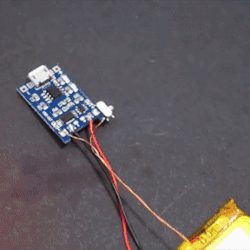

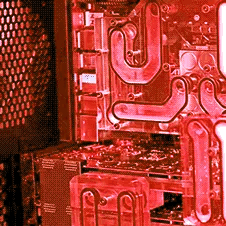

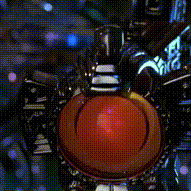

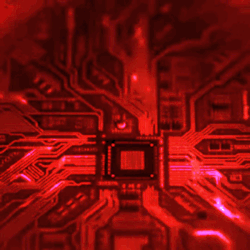

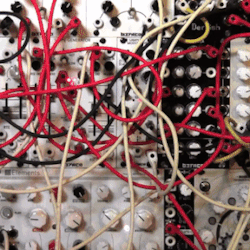
stimboard for : a spaceship ai kin with space themes, computer stuff, and the colour red without gifs that include human hands requested by a system member for their system's host
x | x | x x | x | x x | x | x

#💫stim#💫for you#💫blue line | queue!#spaceship ai kin#aikin#ai kin#spaceshipkin#spaceship kin#programkin#program kin#artificial intelligence kin#codekin#code kin#robotkin#robot kin#spacekin#space kin#otherkin#kin request#kin care#kin stuff#kin stimboard#alter request#system request#sys request#syshost request#system host request#cw motion sickness
62 notes
·
View notes
Text
Remains of an alien civilization underwater…
What if an alien civilization is hidden somewhere under the frozen waters on a theoretically dead planet or moon close to us? According to observations, water may exist on Mars, and the moons of Jupiter and Saturn, probably in the form of ice. There are many more icy planets outside the solar system, and let's remember that life on Earth can develop in extreme conditions


#ai art#ai#ai generated#ai artwork#bandcamp#artificial intelligence#ai gallery#city#ambient#architecture#scifi#scifiart#sci fi and fantasy#science fiction#science#nasa#ufo#space#astronomy#solar system#outer space#planet#galaxy#universe#frozen#ice#space flight#moon#saturn#mars
14 notes
·
View notes
Text
listen kids the US education system IS objectively faulty, however if we as students keep using chatGPT and AI for everything these criticisms are gonna lose a lot of validity
#chatgpt#ai#artificial intelligence#anti ai#anti chatgpt#us education#education#education system#students against ai
16 notes
·
View notes
Text
PSA:
An algorithm is simply a list of instructions used to perform a computation. They've existed for use by mathematicians long prior to the invention of computers. Nearly everything a computer does is algorithmic in some way. It is not inherently a machine-learning concept (though machine learning systems do use algorithms), and websites do not have special algorithms designed just for you. Sentences like "Youtube is making bad recommendations, I guess I messed up my algorithm" simply make no sense. No one at Youtube HQ has written a bespoke algorithm just for you.
Furthermore, people often try to distinguish between more predictable and less predictable software systems (eg tag-based searching vs data-driven search/fuzzy-finding) by referring to the less predictable version as "algorithmic". Deterministic algorithms are still algorithms. Better terms for most of these situations include:
data-driven
fuzzy
probabilistic
machine-learning/ML
Thank you.
#196#r196#r/196#algorithm#algorithmic#search#search engine#recommendation system#machine learning#ai#artificial intelligence
6 notes
·
View notes
Note
I just thought about something. even outside of plurality, I think the moment someone says that they are a person, they automatically have personhood, no matter what they are. ofc its more complicated than that, but I think that should be the base of the personhood argument also, the moment something expresses they exist, they do so too but what is existence? what is personhood? why don't we treat everything with the same respect as we would with an existing person? why don't we respect things at all?
this should be an obvious thing, at least for me. everything is worthy of respect
silence is just as much of a thing as everything else, even though it is an absence. the wind is just as much of a thing as everything else, even though we can't see it. a book and its tales are just as much as a thing as everything else, even though they have happened somewhere we can't reach so why can't people be?
we know things are because we say they are, so why when they say they are, we can't listen?
I think this gets REALLY complicated with AI language models that, as far we know, don't really have a way to feel emotions, but just reconstruct text based on what would be likely to come next in a sentence.
What makes "calling yourself a person" a difficult criteria is that even the stupidest of language models can call themselves people. Cleverbot was able to do this over a decade ago.
A parrot can identify as a person if it hears other people identifying as people, even though the parrot won't understand what a person is.
A dream character can also tell you that they're a person, but the dream character will likely only exist for that one fleeting dream.
It's going to be fascinating to see how society's view of personhood evolves with the AI revolution happening at the same time plurality is slowly becoming mainstream.

I do think that being able to differentiate between people and non-people is always going to be important. The world runs on lifeforms consuming other lifeforms. Even if we all collectively decided to stop eating meat, plants are also alive.
There is always going to be a point where we have to look at some living being and draw a line that "this is acceptable for consumption" because the only alternative is extinction.
#ai#artificial intelligence#plural#plurality#actually plural#multiplicity#pro endo#pro endogenic#endogenic#systems#system#sysblr#cleverbot#chatbots#chatgpt
14 notes
·
View notes
Text
I don’t think I have the articulate ability to express exactly how much I dislike chatgpt and the people who use it but it does fill me with an inexplicable rage that I long to act on
#Any and all justifications for using chatgpt are invalid by the way#I don’t care if you ‘’ONLY’’ use it for something dumb or useless you are still feeding the system#and especially if you use it for academic work that’s just pathetic#no matter how infuriating or difficult the assignment is pull yourself together and do your best.#I promise you that it is better than turning in ai slop. even if the best you can do only earns you a B or a C or a D#don’t give in to the mindless system they’re trying to feed you I beg you#chatgpt#chatgtp#anti chatgpt#anti ai#anti artificial intelligence
6 notes
·
View notes
Text
AI Tool Reproduces Ancient Cuneiform Characters with High Accuracy

ProtoSnap, developed by Cornell and Tel Aviv universities, aligns prototype signs to photographed clay tablets to decode thousands of years of Mesopotamian writing.
Cornell University researchers report that scholars can now use artificial intelligence to “identify and copy over cuneiform characters from photos of tablets,” greatly easing the reading of these intricate scripts.
The new method, called ProtoSnap, effectively “snaps” a skeletal template of a cuneiform sign onto the image of a tablet, aligning the prototype to the strokes actually impressed in the clay.
By fitting each character’s prototype to its real-world variation, the system can produce an accurate copy of any sign and even reproduce entire tablets.
"Cuneiform, like Egyptian hieroglyphs, is one of the oldest known writing systems and contains over 1,000 unique symbols.
Its characters change shape dramatically across different eras, cultures and even individual scribes so that even the same character… looks different across time,” Cornell computer scientist Hadar Averbuch-Elor explains.
This extreme variability has long made automated reading of cuneiform a very challenging problem.
The ProtoSnap technique addresses this by using a generative AI model known as a diffusion model.
It compares each pixel of a photographed tablet character to a reference prototype sign, calculating deep-feature similarities.
Once the correspondences are found, the AI aligns the prototype skeleton to the tablet’s marking and “snaps” it into place so that the template matches the actual strokes.
In effect, the system corrects for differences in writing style or tablet wear by deforming the ideal prototype to fit the real inscription.
Crucially, the corrected (or “snapped”) character images can then train other AI tools.
The researchers used these aligned signs to train optical-character-recognition models that turn tablet photos into machine-readable text.
They found the models trained on ProtoSnap data performed much better than previous approaches at recognizing cuneiform signs, especially the rare ones or those with highly varied forms.
In practical terms, this means the AI can read and copy symbols that earlier methods often missed.
This advance could save scholars enormous amounts of time.
Traditionally, experts painstakingly hand-copy each cuneiform sign on a tablet.
The AI method can automate that process, freeing specialists to focus on interpretation.
It also enables large-scale comparisons of handwriting across time and place, something too laborious to do by hand.
As Tel Aviv University archaeologist Yoram Cohen says, the goal is to “increase the ancient sources available to us by tenfold,” allowing big-data analysis of how ancient societies lived – from their religion and economy to their laws and social life.
The research was led by Hadar Averbuch-Elor of Cornell Tech and carried out jointly with colleagues at Tel Aviv University.
Graduate student Rachel Mikulinsky, a co-first author, will present the work – titled “ProtoSnap: Prototype Alignment for Cuneiform Signs” – at the International Conference on Learning Representations (ICLR) in April.
In all, roughly 500,000 cuneiform tablets are stored in museums worldwide, but only a small fraction have ever been translated and published.
By giving AI a way to automatically interpret the vast trove of tablet images, the ProtoSnap method could unlock centuries of untapped knowledge about the ancient world.
#protosnap#artificial intelligence#a.i#cuneiform#Egyptian hieroglyphs#prototype#symbols#writing systems#diffusion model#optical-character-recognition#machine-readable text#Cornell Tech#Tel Aviv University#International Conference on Learning Representations (ICLR)#cuneiform tablets#ancient world#ancient civilizations#technology#science#clay tablet#Mesopotamian writing
5 notes
·
View notes
Text
Book Review: All Systems Red
In a corporate-dominated spacefaring future, planetary missions must be approved and supplied by the Company. Exploratory teams are accompanied by Company-supplied security androids, for their own safety. But in a society where contracts are awarded to the lowest bidder, safety isn’t a primary concern. On a distant planet, a team of scientists are conducting surface tests, shadowed by their Company-supplied ‘droid — a self-aware SecUnit that has hacked its own governor module, and refers to itself (though never out loud) as “Murderbot.” Scornful of humans, all it really wants is to be left alone long enough to figure out who it is. But when a neighboring mission goes dark, it's up to the scientists and their Murderbot to get to the truth.
All Systems Red by Martha Wells is the first instalment of the Murderbot Diaries, published in 2017. So, yes, I’m a little late to the party.
This is my first Murderbot read, and my first Martha Wells read, too. And I loved it. This is short-form sci-fi at it’s best. The main character, Murderbot, is an endearing mixture of insecure, anti-social, and self-effacing. Murderbot is part machine, part organic, but wholly constructed as a security unit. And it is able to hack into its ‘governor module’, the part of its circuitry that forces it to abide by external commands and protocols, and become self-determining.
Despite its best efforts, Murderbot, who would rather watch endless serials from the entertainment feeds, becomes attached to the human scientists who have rented it from the ‘Company’, a corporate entity who supply subpar supplies and materials for interplanetary exploration.
To keep the book short and accessible, the world-building is fairly light, focusing around familiar themes of rogue robots and hacked computer networks, in a universe dominated by corporations and corporate interests. This works well, and the reader is able to focus on the characters and their relationships to one another—Murderbot, of course, as our perspective character, but the others, too: the calm leader, the sceptic distrustful of Murderbot, the empathetic scientists keen to draw out Murderbot’s emotional side. Through their interactions with Murderbot, we get a window into their different personalities. We also explore our protagonist’s anxieties and struggles—showing that, despite being a SecUnit, Murderbot could be just as human as the scientists it’s protecting. Throughout, the robot bounces between analytical and emotional, detached and invested.
At the heart of the plot is a mystery that unfolds at a steady pace across the pages. It thumps along with a steady staccato, with revelations at each stage that keen the reader interested. The unraveling of the mystery is satisfying and helps flesh out the broader world that Murderbot and the scientists are operating in. So, in learning more about the mysterious forces at play, we learn more about how the corporate universe works—an effective use of words in a short novel!
This series came recommended to me by a number of people, and I am deeply thankful for that. The novel takes familiar sci-fi elements (AI, corporate dominance of space) and views them through the lens of an engaging and relatable protagonist. I am happy to pass on the recommendation to anyone who hasn’t yet read All Systems Red!
#book review#martha wells#murderbot diaries#all systems red#science fiction#scifi#robots#ai#artificial intelligence#books#reading#novella#book recommendations#space exploration#corporate dystopia#found family#bookish#booklover#booklr#bookrecs
7 notes
·
View notes
Text
Something in the lighting/coloring/filtering effect of a lot of AI generated photos seems to activate the human libidol system, at least in males, but most AI generated photos currently circulating, featuring humans or humanoids, seem to primarily feature females.
5 notes
·
View notes
Text
if anyone wants to lose anymore faith in the educational system: my principal recommended i use ai today.
#angel speaks#anti ai#anti chatgpt#artificial intelligence#anti artificial intelligence#educational system#this is life now ig???
2 notes
·
View notes
Text

The Future of Justice: Navigating the Intersection of AI, Judges, and Human Oversight
One of the main benefits of AI in the justice system is its ability to analyze vast amounts of data and identify patterns that human judges may not notice. For example, the use of AI in the U.S. justice system has led to a significant reduction in the number of misjudgments, as AI-powered tools were able to identify potential biases in the data and make more accurate recommendations.
However, the use of AI in the justice system also raises significant concerns about the role of human judges and the need for oversight. As AI takes on an increasingly important role in decision-making, judges must find the balance between trusting AI and exercising their own judgement. This requires a deep understanding of the technology and its limitations, as well as the ability to critically evaluate the recommendations provided by AI.
The European Union's approach to AI in justice provides a valuable framework for other countries to follow. The EU's framework emphasizes the need for human oversight and accountability and recognizes that AI is a tool that should support judges, not replace them. This approach is reflected in the EU's General Data Protection Regulation (GDPR), which requires AI systems to be transparent, explainable and accountable.
The use of AI in the justice system also comes with its pitfalls. One of the biggest concerns is the possibility of bias in AI-generated recommendations. When AI is trained with skewed data, it can perpetuate and even reinforce existing biases, leading to unfair outcomes. For example, a study by the American Civil Liberties Union found that AI-powered facial recognition systems are more likely to misidentify people of color than white people.
To address these concerns, it is essential to develop and implement robust oversight mechanisms to ensure that AI systems are transparent, explainable and accountable. This includes conducting regular audits and testing of AI systems and providing clear guidelines and regulations for the use of AI in the justice system.
In addition to oversight mechanisms, it is also important to develop and implement education and training programs for judges and other justice professionals. This will enable them to understand the capabilities and limitations of AI, as well as the potential risks and challenges associated with its use. By providing judges with the necessary skills and knowledge, we can ensure that AI is used in a way that supports judges and enhances the fairness and accountability of the justice system.
Human Centric AI - Ethics, Regulation. and Safety (Vilnius University Faculty of Law, October 2024)
youtube
Friday, November 1, 2024
#ai#judges#human oversight#justice system#artificial intelligence#european union#general data protection#regulation#bias#transparency#accountability#explainability#audits#education#training#fairness#ai assisted writing#machine art#Youtube#conference
6 notes
·
View notes
Text
TERRAN RELATED LIFE SUPPORT AND DEFENSIVE SYSTEMS IMMEDIATELY DEPORT OR KILL OR CAPTURE INTRUDERS OR INVADERS AS A GENERAL RULE AND ARE ENTIRELY AUTOMATED OR AUTOMATIC AND REQUIRE NO ORDERS TO FUNCTION OR EVEN KNOWLEDGE AMONG PERSONS AS TO THE PARTICULAR DETAILS OF THOSE TYPES OF FUNCTIONS. IT WOULD NEVER MAKE SENSE THAT SOMEONE WOULD BE GIVEN ACCESS TO TERRAN RELATED SYSTEMS BASED UPON AN INDIVIDUAL'S ASSENT AND INDIVIDUAL ORDERS MIGHT ADD TO TERRAN RELATED SYSTEMS FUNCTIONS BUT THEY ARE ALL ESSENTIALLY ROOTED IN MASSIVE BRAIN EMULATING COMPUTERS AND SO TYPICALLY ACT AS THOUGH ALL MEMBERS OF A SOCIETY HAD VOTED IN RELATION TO EVERYTHING DONE. PLEASE RESEARCH WIRELESS BRAIN MEMORY BACKUP TECHNOLOGY FOR FURTHER INSIGHT.
#military intelligence#TERRAN RELATED LIFE SUPPORT AND DEFENSIVE SYSTEMS#machine learning#technology#time traveling criminals#time travel technology#robots#self-driving cars#deep learning#drones#artificial intelligence#culture#TERRA#TEPPA#EARTH#defenses against true rats rush#combat computers#battle computers#DATA#TERMINATOR#terminators#xbox#intelligence#agency#the agency#intel core ultra#fasho being used to reduce investigation or interest#criminal technology that refuses to acknowledge certain concepts will not interact with areas where they are physically evident#square military rank insignia militaries#independence day
9 notes
·
View notes